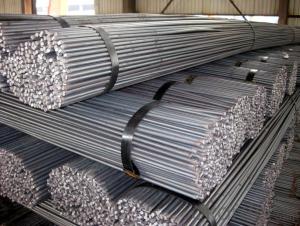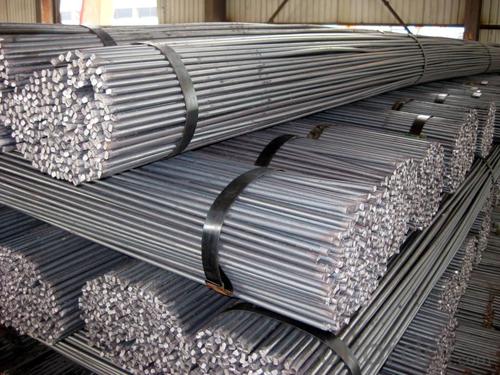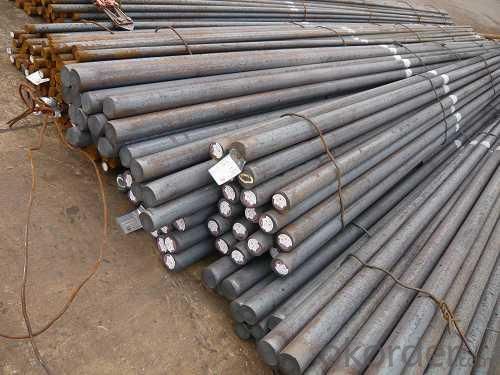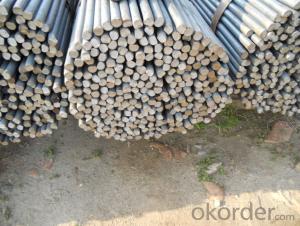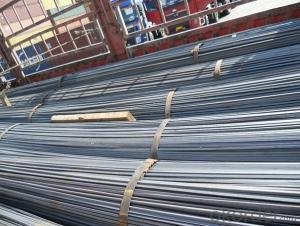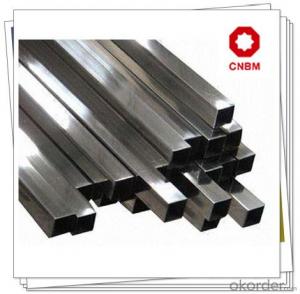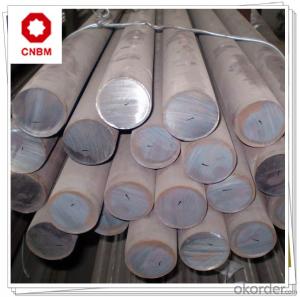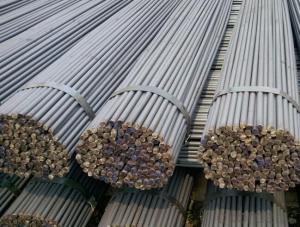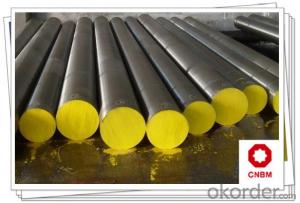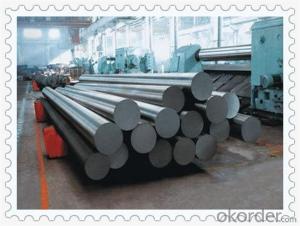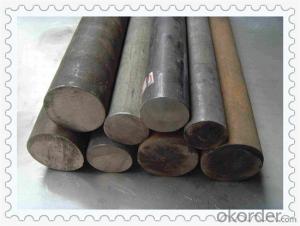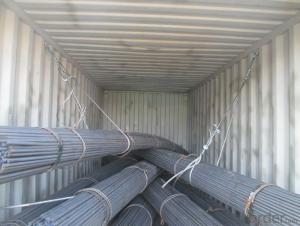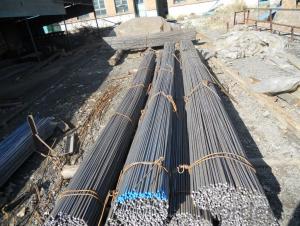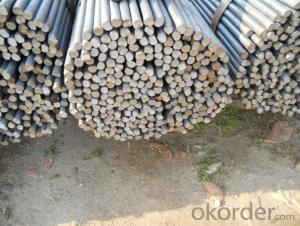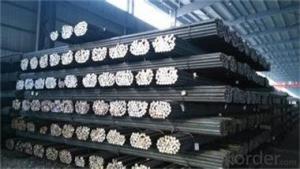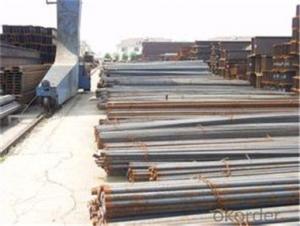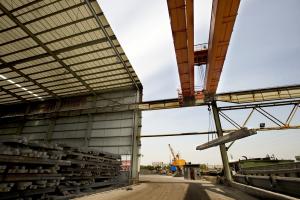Hot Rolled Steel Round Bar Factory Supplier Made In China
- Loading Port:
- Tianjin
- Payment Terms:
- TT or LC
- Min Order Qty:
- 28 m.t.
- Supply Capability:
- 30000 m.t./month
OKorder Service Pledge
OKorder Financial Service
You Might Also Like
Product Description:
OKorder is offering Hot Rolled Steel Round Bar Factory Supplier Made In China at great prices with worldwide shipping. Our supplier is a world-class manufacturer of steel, with our products utilized the world over. OKorder annually supplies products to European, North American and Asian markets. We provide quotations within 24 hours of receiving an inquiry and guarantee competitive prices.
Product Applications:
Hot Rolled Steel Round Bar Factory Supplier Made In China 0 are ideal for structural applications and are widely used in the construction of buildings and bridges, and the manufacturing, petrochemical, and transportation industries.
Product Advantages:
OKorder's Hot Rolled Steel Round Bar Factory Supplier Made In China are durable, strong, and resist corrosion.
Main Product Features:
· Premium quality
· Prompt delivery & seaworthy packing (30 days after receiving deposit)
· Corrosion resistance
· Can be recycled and reused
· Mill test certification
· Professional Service
· Competitive pricing
Product Specifications:
≤ |
| ≤ | ≤ | ||||
Q235 | A | 0.14-0.22 | 0.30 | 0.30-0.65 | 0.050 | 0.045 | |
Q235 | B | 0.12-0.20 | 0.30 | 0.30-0.70 | 0.045 | 0.045 | |
Trademark | Rank | Pulling Test | |||||
Bend PointΔs/Mpa | Tensile Strength | Elongation Ratioδ5% | |||||
Thickness (Diameter) /MM | Thickness (Diameter) /MM | ||||||
≤16 | 16-40 | ≤16 | 16-40 | ||||
≥ | ≥ | ||||||
Q235 | A | 235 | 225 | 375-500 | 26 | 25 | |
Q235 | B | 235 | 225 | 375-500 | 26 | 25 | |
Packaging & Delivery of Hot Rolled Hot Rolled Steel Round Bar Factory Supplier Made In China
1. Packing: it is nude packed in bundles by steel wire rod
2. Bundle weight: not more than 3.5MT for bulk vessel; less than 3 MT for container load
3. Marks:
Color marking: There will be color marking on both end of the bundle for the cargo delivered by bulk vessel. That makes it easily to distinguish at the destination port.
Tag mark: there will be tag mark tied up on the bundles. The information usually including supplier logo and name, product name, made in China, shipping marks and other information request by the customer.
If loading by container the marking is not needed, but we will prepare it as customer request.
4. Transportation: the goods are delivered by truck from mill to loading port, the maximum quantity can be loaded is around 40MTs by each truck. If the order quantity cannot reach the full truck loaded, the transportation cost per ton will be little higher than full load.
5. Delivered by container or bulk vessel
FAQ:
Q1: Why buy Materials & Equipment from OKorder.com?
A1: All products offered byOKorder.com are carefully selected from China's most reliable manufacturing enterprises. Through its ISO certifications, OKorder.com adheres to the highest standards and a commitment to supply chain safety and customer satisfaction.
Q2: How do we guarantee the quality of our products?
A2: We have established an advanced quality management system which conducts strict quality tests at every step, from raw materials to the final product. At the same time, we provide extensive follow-up service assurances as required.
Q3: How soon can we receive the product after purchase?
A3: Within three days of placing an order, we will begin production. The specific shipping date is dependent upon international and government factors, but is typically 7 to 10 workdays.
Q4: What makes stainless steel stainless?
A4: Stainless steel must contain at least 10.5 % chromium. It is this element that reacts with the oxygen in the air to form a complex chrome-oxide surface layer that is invisible but strong enough to prevent further oxygen from "staining" (rusting) the surface. Higher levels of chromium and the addition of other alloying elements such as nickel and molybdenum enhance this surface layer and improve the corrosion resistance of the stainless material.
Q5: Can stainless steel rust?
A5: Stainless does not "rust" as you think of regular steel rusting with a red oxide on the surface that flakes off. If you see red rust it is probably due to some iron particles that have contaminated the surface of the stainless steel and it is these iron particles that are rusting. Look at the source of the rusting and see if you can remove it from the surface.
Images:
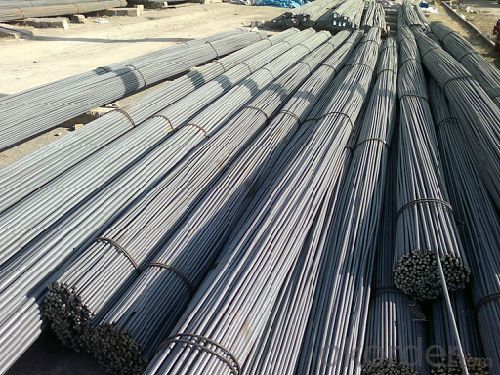
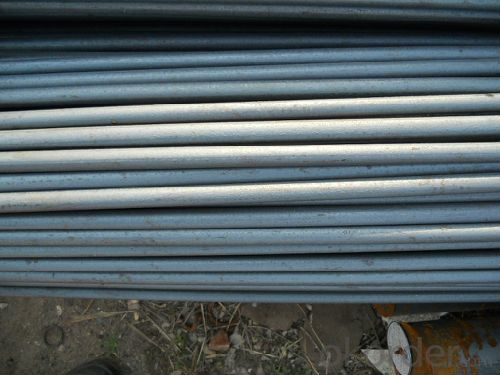
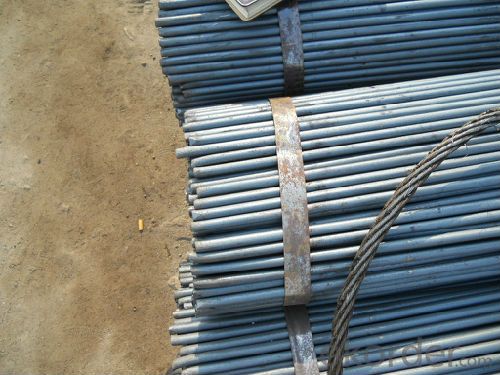
- Q: Can steel round bars be heat treated to improve their mechanical properties?
- Steel round bars can undergo heat treatment to enhance their mechanical properties. Heat treatment involves heating the steel to a specific temperature, maintaining it at that temperature for a certain duration, and then cooling it rapidly or slowly. This process can modify the microstructure of the steel, resulting in changes to its hardness, strength, toughness, and other mechanical properties. Various types of heat treatment processes can be applied to steel round bars, depending on the desired outcome. For instance, annealing is a process that entails heating the steel to a specific temperature and subsequently cooling it gradually. This method helps alleviate internal stresses in the steel, enhance its ductility, and facilitate machining. Another commonly used heat treatment process is quenching and tempering. This involves heating the steel to a specific temperature and rapidly cooling it, often by immersing it in an oil or water quenching medium. This swift cooling process helps strengthen the steel, making it more resistant to wear and abrasion. Following quenching, the steel is typically tempered by reheating it to a lower temperature, reducing its brittleness and improving its toughness. In addition to annealing and quenching and tempering, other heat treatment processes such as normalizing, case hardening, and precipitation hardening can also be employed to enhance the mechanical properties of steel round bars. These processes involve different heating and cooling techniques, and are utilized to achieve specific outcomes based on the desired properties of the steel. Overall, heat treatment is a versatile and effective approach for improving the mechanical properties of steel round bars. By carefully controlling the heating and cooling process, significant improvements in hardness, strength, toughness, and other properties can be achieved, rendering the steel suitable for a wide range of applications.
- Q: What is the maximum nickel content allowed for steel round bars?
- The maximum nickel content allowed for steel round bars typically varies depending on the specific grade and industry standards. However, in general, the nickel content in steel round bars is usually limited to around 2-3% to maintain desirable mechanical properties and prevent excessive hardening.
- Q: What are the different types of steel round bars used in the automotive braking systems?
- There are primarily two types of steel round bars used in automotive braking systems: solid steel round bars and hollow steel round bars. Solid steel round bars are commonly used for brake rotors and brake drums, providing strength and durability to handle the heat and friction generated during braking. Hollow steel round bars, on the other hand, are often utilized for brake caliper pistons, as they offer a lighter weight option without compromising on strength and performance.
- Q: How do you measure the straightness of a steel round bar?
- There exist several methods for measuring the straightness of a steel round bar. One commonly employed approach involves using a straight edge or ruler, which is positioned along the length of the bar to check for any gaps or deviations. If the bar is completely straight, it should make contact with the straight edge throughout its entire length. Any gaps or deviations indicate that the bar is not perfectly straight. Another method involves the utilization of a laser alignment system. This method entails placing the round bar on a flat surface and projecting a line along its length using a laser. The projected line will reveal any deviations or bends in the bar. This method provides a more precise measurement of straightness. Moreover, a dial indicator, a precision measuring instrument, can also be employed. This device includes a small probe that is placed against the surface of the round bar. As the bar is rotated, the dial indicator will measure any variations in the surface, thereby indicating any bends or deviations from straightness. It is worth noting that the required level of straightness will vary depending on the specific application of the steel round bar. In certain cases, a slight deviation may be acceptable, while in others, a high level of straightness may be imperative.
- Q: What are the different types of steel round bar finishes?
- There are several different types of steel round bar finishes, including hot rolled, cold drawn, turned and polished, and ground and polished.
- Q: What is the maximum manganese content allowed for steel round bars?
- The permissible manganese content for steel round bars may differ based on the grade or standard being adhered to. Generally, the manganese content in steel round bars is typically restricted to a maximum of approximately 1.65% by weight. This limitation is due to the adverse effects that higher manganese levels can have on the mechanical properties and weldability of the steel. Nevertheless, it is crucial to acknowledge that various industries or applications may establish their own specific requirements or allowances for manganese content in steel round bars. Hence, it is always advisable to refer to the relevant specifications or standards to ascertain the maximum manganese content permissible for a specific grade of steel round bars.
- Q: What is the difference between a solid and a hollow steel round bar?
- A cylindrical bar made entirely of solid steel material is called a solid steel round bar. It is completely filled and does not have any empty spaces inside. On the other hand, a hollow steel round bar is also cylindrical but has a hollow center, meaning there is empty space or a void within the bar. The primary distinction between a solid and a hollow steel round bar is their structural composition and the roles they fulfill. A solid steel round bar is typically used in applications where strength and durability are of utmost importance. It is commonly employed in construction, manufacturing, and engineering projects that require load-bearing capacity. Conversely, a hollow steel round bar is designed to be lighter in weight while still maintaining structural integrity. The hollow center allows for weight reduction while still providing sufficient strength for various applications. Hollow steel round bars are often utilized in industries such as aerospace, automotive, and marine, where reducing weight is crucial for enhanced fuel efficiency and overall performance. Furthermore, the empty space inside a hollow steel round bar also presents an opportunity for customization. It can be utilized to house other components, such as wires or piping, enabling a more streamlined and efficient design. This versatility makes hollow steel round bars suitable for various applications that necessitate both strength and weight reduction. In conclusion, the main difference between a solid and a hollow steel round bar lies in their structural composition and the roles they fulfill. Solid steel round bars are employed in applications that demand maximum strength and durability, while hollow steel round bars offer weight reduction and customization options, making them suitable for applications that prioritize lightweight design without compromising structural integrity.
- Q: What is the composition of steel round bars?
- Steel round bars primarily consist of iron and carbon, along with small amounts of other elements like manganese, silicon, sulfur, and phosphorus. The primary element, iron, provides the steel bar with strength and structural integrity. The carbon content is vital in determining the bar's hardness and strength, where higher carbon levels result in a harder and stronger material. Manganese contributes to the overall strength and toughness of the steel, while silicon aids in enhancing its resistance to oxidation and scaling at high temperatures. Sulfur and phosphorus, considered impurities, are kept at low levels to prevent any negative impact on the mechanical properties of the material. In summary, the composition of steel round bars is meticulously controlled to achieve the desired strength, durability, and specific properties required for different applications.
- Q: What is the difference between a polished and a cold drawn steel round bar?
- A polished steel round bar refers to a steel bar that has undergone a polishing process, which involves using abrasive materials to remove any surface imperfections and create a smooth, shiny finish. Polishing enhances the aesthetic appearance of the steel bar and improves its corrosion resistance. This process is commonly used for decorative or architectural applications where the visual appeal is important. On the other hand, a cold drawn steel round bar is produced through a different manufacturing process. In this method, a steel bar is pulled through a die at room temperature to reduce its diameter and increase its length. This process results in a bar with a more precise and uniform diameter, as well as improved mechanical properties such as higher tensile strength and dimensional accuracy. Cold drawing also enhances the surface finish, but it may not achieve the same level of smoothness and shine as a polished bar. In summary, the main difference between a polished and a cold drawn steel round bar lies in the manufacturing process and the resulting properties. Polishing provides a smooth and shiny finish for aesthetic purposes, while cold drawing improves the dimensional accuracy and mechanical properties of the steel bar.
- Q: How about the difference between round steel and shaped steel? Where are they mainly used?
- Section steel is a general term, round steel is a kind of section steel, mainly used in building structure, mostly for engineering steel.
Send your message to us
Hot Rolled Steel Round Bar Factory Supplier Made In China
- Loading Port:
- Tianjin
- Payment Terms:
- TT or LC
- Min Order Qty:
- 28 m.t.
- Supply Capability:
- 30000 m.t./month
OKorder Service Pledge
OKorder Financial Service
Similar products
Hot products
Hot Searches
Related keywords
